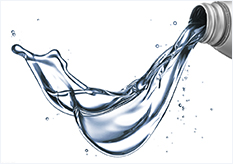Products 产品中心
CarbDRIL All-oil OBM Technology

CarbDRIL All-oil OBM Technology
n Technical Introduction
CarbDRIL All-oil OBM utilizes all oil as the dispersion medium and boasts high-temperature resistance, salt and calcium intrusion resistance, low viscosity, low filtration loss, and corrosion resistance. The absence of water is pivotal for achieving low viscosity, aiding in rheology control and adjustment. Additionally, full oil filtrate control ensures low filtration loss, improving inhibition and safeguarding oil and gas layers. The dense filter cake formed by plugging enhances wellbore stability. This technology finds application in formations with significant differences in formation water phase activity, prone to collapse such as soft, hard, and brittle shale, water-sensitive formations with high smectite content, low-pressure formations with gradually depleted energy, and deep water environments. It can also serve as jam release fluid, completion fluid, workover fluid, and coring fluid.
Key treatment agents include the main emulsifier CarbEMUL, auxiliary emulsifier CarbCOAT, thixotropic agent RheVIS, and fluid loss control agent PerFLO.
n Technical Features
( 1 ) Exceptional Temperature Resistance: Exceeds 220 ℃, with a density surpassing 2.5 g/cm3.
( 2 ) Strong Inhibitory Performance: The primary filtrate component being base oil inhibits the hydration, dispersion, and swelling of clay.
( 3 ) Robust Bridging and Plugging Performance: Oleophilic colloids' adsorption and deposition on the wellbore improve stability.
( 4 ) High Stability: Emulsion Stability (ES) exceeds 1500 V.
( 5 ) Effective Rheological Control: Prepared high-density drilling fluid exhibits good rheological control and adjustment performance.
( 6 ) Excellent Compatibility with diesel-based and mineral oil-based fluids..
n Field Application
The system has been successfully deployed in over 10 shale gas wells in Sichuan and Shunbei Oilfield, significantly reducing drilling sticking occurrences, improving wellbore stability, and yielding positive results. It has shortened the drilling cycle by 12%

